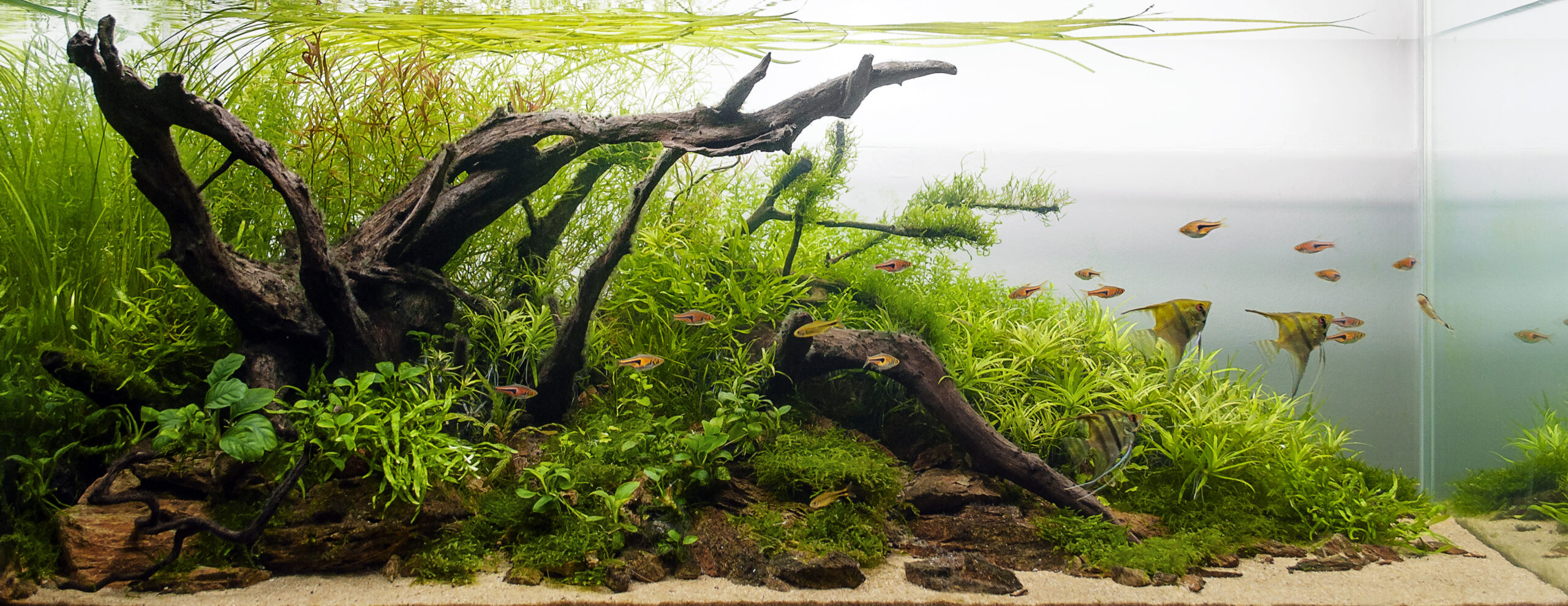Driftwood can add a beautiful, natural touch to any aquarium, but getting it to sink and removing tannins can be a challenge. This blog post will guide you through a quick and effective method to make your driftwood sink and ensure your aquarium water stays clear.
Why Driftwood?
Driftwood not only enhances the aesthetic appeal of your aquarium but also provides hiding spots for fish and can even lower the pH of your water. However, untreated driftwood can float and release tannins, turning your water brown. While tannins are not harmful and can even be beneficial for fish, many aquarium owners prefer clear water.

Steps to Make Driftwood Sink
Materials Needed:
- Driftwood
- Large pot (an old one you don’t use for cooking)
- Water
- Stove
Procedure:
- Prepare Your Driftwood: If you collect driftwood from a river, make sure to clean it thoroughly to remove any dirt or debris.
- Boil the Driftwood:
- Fill a large pot with water and submerge the driftwood. It will likely float at first.
- Turn the stove on high and bring the water to a rolling boil.
- Boil the driftwood for about 15 minutes. You’ll notice the water turning light brown due to the release of tannins.
- Dump the water and repeat the boiling process four more times. Each time, you’ll notice fewer tannins in the water.
- After several boils, the driftwood should start to sink. For larger pieces, this process might take longer.
- Soak Overnight:
- Fill the pot with water one last time and let the driftwood soak overnight.
- By morning, the driftwood should be fully submerged and the water should be mostly clear.
- Alternative Method:
- If you don’t have a pot large enough, you can soak the driftwood in a large container of water. Change the water daily to help release the tannins faster. This method takes longer but is equally effective.
- Final Placement:
- Once the driftwood is ready, place it in your aquarium.
- Use Purigen or activated carbon in your filter to keep the water crystal clear. These filter media help remove any remaining tannins and impurities.
Benefits of This Method
- Quick and Effective: Boiling the driftwood speeds up the process of making it sink and releases tannins quickly.
- Sterilization: Boiling also helps to sterilize the driftwood, removing any harmful substances.
- Cost-Effective: If you collect driftwood from natural sources, this method ensures it’s safe for your aquarium without additional costs.
Tips and Tricks
- Patience and Repetition: The key to success with this method is patience and repetition. Boil and soak the driftwood multiple times to ensure it sinks and most tannins are removed.
- Water Parameters: Regularly check your aquarium water parameters, especially if you’re using large pieces of driftwood, as it can affect the pH over time.
FAQs
| Question | Answer |
|---|---|
| Why does driftwood float? | Driftwood is naturally buoyant due to the air trapped in its cells. |
| Are tannins harmful? | No, tannins are not harmful and can even be beneficial for fish. |
| How long does the process take? | Boiling and soaking can take a few days to a week, depending on the size of the driftwood. |
Conclusion
By following these steps, you can make your driftwood sink quickly and ensure your aquarium stays clear and healthy. Thanks for reading and I hope you learned something!
Happy Aquascaping!
- How to Apply an Aquarium Background: A Step-by-Step Guide – October 29, 2024
- How to Clean Aquarium Sand with Pillow Case for a Crystal Clear Tank – October 29, 2024
- How to Treat White Spot Disease (Ich) in Your Aquarium: Save Your Fish Tank – October 7, 2024



